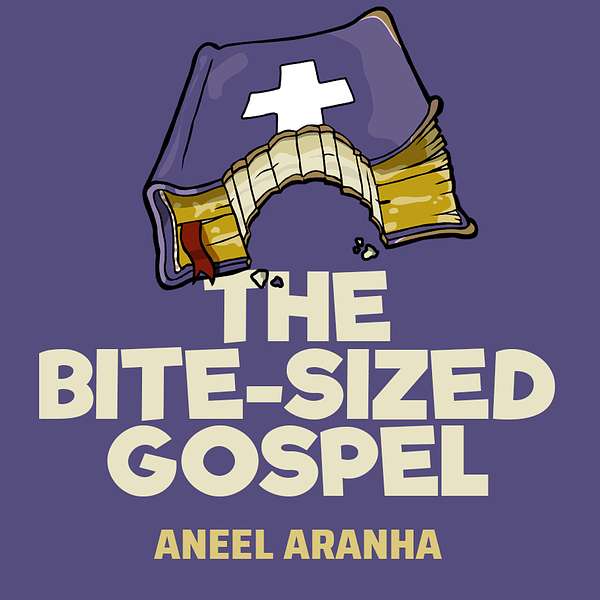
The Bite-Sized Gospel with Aneel Aranha
The Bite-Sized Gospel with Aneel Aranha
Matthew 27:15-26 — Power Dynamics
What is our role in the systems and structures that perpetuate injustice and how can we make a difference? These are things to think about as we reflect on the events leading to Jesus’ death.
Matthew 27:15-26 — Power Dynamics
Hello and welcome to the Bite-Sized Gospel with Aneel Aranha. Today we will reflect on Matthew 27:15-26. Listen.
Now it was the governor’s custom at the festival to release a prisoner chosen by the crowd. At that time they had a well-known prisoner whose name was Jesus Barabbas. So when the crowd had gathered, Pilate asked them, “Which one do you want me to release to you: Jesus Barabbas, or Jesus who is called the Messiah?” For he knew it was out of self-interest that they had handed Jesus over to him.
While Pilate was sitting on the judge’s seat, his wife sent him this message: “Don’t have anything to do with that innocent man, for I have suffered a great deal today in a dream because of him.”
But the chief priests and the elders persuaded the crowd to ask for Barabbas and to have Jesus executed.
“Which of the two do you want me to release to you?” asked the governor.
“Barabbas,” they answered.
“What shall I do, then, with Jesus who is called the Messiah?” Pilate asked.
They all answered, “Crucify him!”
“Why? What crime has he committed?” asked Pilate.
But they shouted all the louder, “Crucify him!”
When Pilate saw that he was getting nowhere, but that instead an uproar was starting, he took water and washed his hands in front of the crowd. “I am innocent of this man’s blood,” he said. “It is your responsibility!”
All the people answered, “His blood is on us and on our children!”
Then he released Barabbas to them. But he had Jesus flogged, and handed him over to be crucified.
There are three interesting themes in this passage that we can learn from. One is the power dynamics at play. On one side is Pilate, the representative of Roman imperial power, who wields the authority to either condemn or release Jesus. On the other side is the crowd, composed of the common people, who hold the power of collective action and the ability to sway Pilate's decision.
But as the story unfolds, it becomes clear that the power dynamics are not a simple divide between those who have power (the oppressors) and those who do not (the oppressed). There are other factors at play. Pilate is not a righteous leader but a weak and cowardly one who succumbs to the pressures of the crowd. The crowd, meanwhile, is easily swayed and manipulated by the religious leaders who seek to maintain their own power and influence.
A second theme that emerges from this passage is the responsibility of leadership. Pilate, as the governor of Judea, has a duty to uphold justice and maintain order. Yet, in this moment, he abdicates that responsibility and allows himself to be swayed by the crowd's demands. His failure to act justly leads to the unjust execution of an innocent man.
Finally, this passage highlights the complicity of the masses. The crowd, in their vociferous demand to free Barabbas and crucify Jesus, become active participants in the events leading to Jesus' death. Their willingness to go along with the religious leaders' agenda and disregard Jesus' innocence speaks to the dangers of a mob mentality and the importance of individual responsibility.
In summary, this passage serves as a powerful reminder of the complexities of power, the responsibility of leadership, and the dangers of groupthink. It challenges us to examine our own roles in the systems and structures that perpetuate injustice and to take responsibility for our own actions in shaping the world around us.
May the Spirit be with you.